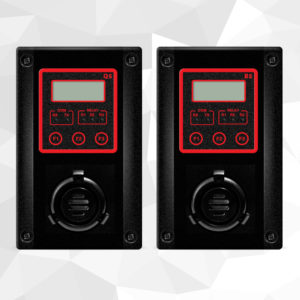By Mya Holzemer, Sales Engineer at Automation Components, Inc.
Toxic and combustible gases can be invisible threats to indoor air quality (IAQ). These gases need to be monitored to prevent the build-up of unsafe levels that may cause harm to building occupants.
Toxic and combustible gas sensors are used in a variety of applications, including:

- Hospitals
- Schools
- Offices
- Airplane Hangars
- Warehouse Battery Storage Rooms
- Propane Storage Rooms
- Refrigerated Warehouses
- Chiller Plants
- Boiler Rooms
- Parking Garages
- Semi-Truck Repair Facilities
School classrooms and office conference rooms are common spaces where you need to consider monitoring for CO2 build-up during times of high occupancy. Boiler rooms need to be monitored for potential methane and CO leaks and even chiller plants need to be monitored for freon leaks. What’s your application?
Consider the Height at Which You Mount Your Gas Sensor
The weight of a gas often determines the height at which it collects. If your measured gas has a similar weight to normal ambient air, you may typically find it collecting at 4 to 6-feet above the floor. A heavier gas, such as NO2, is more commonly found at 0.5 to 1.5-feet above the floor. In contrast, ammonia is lighter than air and is typically found at 0.5 to 1.5-feet below ceiling level.
Some applications are more complex and will require additional consideration. For example, semi-trailer repair facilities often see NO2 collecting first at higher levels where the exhaust comes out of the semi-trailer’s stack. The gas then cools down and sinks closer to the floor. Your sensor should be installed accordingly.
Forklift Fuel Storage: Toxic and Combustible Gas Monitoring Differences
Different applications call for different solutions. Forklifts used in warehouses and manufacturing facilities are often powered by either propane or a battery source. Both propane tanks and 12-volt batteries will typically be stored in rooms that need to be properly monitored and ventilated. However, how you store these power sources needs to be tailored to each power source.
If propane tanks are being used and stored for future use, you must consider that propane is heavier than air and sinks lower to the ground. Therefore, we typically recommend that propane gas sensors are to be mounted 0.5 to 1.5-feet above the floor to monitor for leaks. In contrast, if batteries are being stored, you’ll need to monitor the lower explosion limit (LEL) of hydrogen in the room to prevent combustible levels of gas build-up. Hydrogen LEL sensors should be mounted 0.5 to 1.5-feet below the ceiling as hydrogen is lighter than air.
No matter the application, please refer to all applicable Federal, State, Provincial and Local Health and Safety laws and regulations before installing toxic/combustible gas sensors. It is imperative that you understand the application and how it affects the proper sensor installation.
Contact Your KMC Representative for More Information
Choose the Q5 Toxic/Combustible Transmitter Series for analog output or the B5 Toxic/Combustible Transmitter Series to communicate with BACnet™ MS/TP protocols.
Models are available to monitor your choice of over 40 toxic/combustible gases or gas levels. Contact KMC for a full list of available sensors.
 Cart
Cart